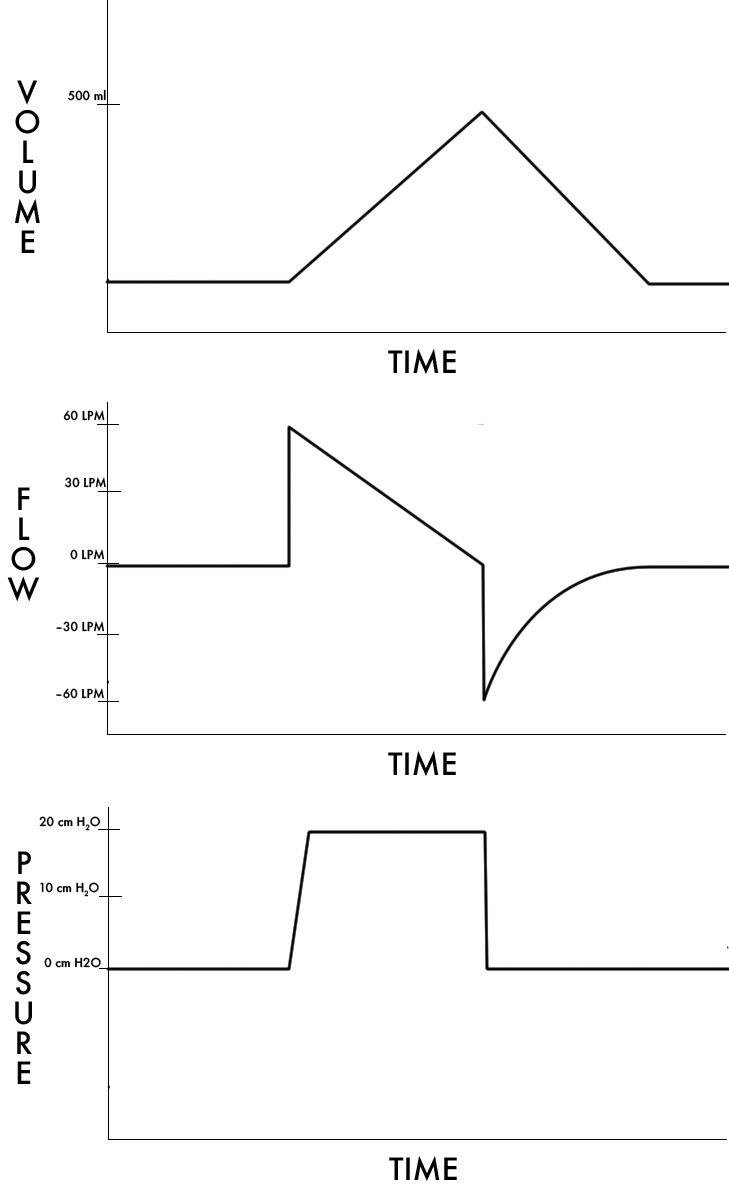This is probably true of all modern ICU vents and even some newer transport vents (neither of which I'm very familiar with anymore) but the "basic" PCV mode uses a flow pattern that decelerates in a linear fashion until the target pressure is reached. Just like volume modes, the vent doesn't vary anything beyond what the operator sets.
I guess I can't speak to all of the older models, but I don't think it's possible to have pressure control without a variable flow.
Here's why: the basic premise of pressure control is that you reach a target pressure and then hold it for a set time. (At least, by convention this is how it works; you could have another universe where it works differently, but this is what people mean when they say "pressure control" these days.) Flow doesn't decelerate until you reach the target pressure; flow decelerates
because you've reached the target pressure.
Flow starts out very high in an effort to quickly reach the set pressure (how high is determined by rise time, the only control you have on this), then once you get there, it takes much less flow to maintain that pressure.

But airway pressure depends on the compliance in the airway, and in a patient with any spontaneous work of breathing, compliance depends on their effort. If they do nothing, compliance will be low; if they inspire vigorously, compliance will be high. And they can do both of those things during the same breath if they want.
The vent doesn't know what the patient is doing, but it knows the airway pressure, so if it wants to reach and maintain the target pressure, it has to adjust flow in order to match the patient's attempts to change it.
I don't think it's possible to do this without a variable flow. If the vent cannot adjust flow, it cannot reach the goal pressure; flow is the independent variable here. I suppose you could have a fixed flow (like volume control), and just inspire linearly until you peg the pressure limit, but this would only work in a patient with zero effort (fixed compliance), and would also make it impossible to set your inspiratory time (since the minimum inspiratory time would become determined by flow). Is that how older vents did it?
PRVC was actually a proprietary term (I forget which manufacturer) and I think it was the first commonly-used mode that would not only change flow rates to meet patient demand by sensing changes in airway resistance at different points of the inspiration cycle, but would also adjust the flow rates at different points to achieve the set vT at the lowest airway pressure possible. Or again, at least that's how I've always understood it.
I would say the added variable in PRVC is not flow, but volume. The individual breaths look exactly the same as pressure control breaths. The difference is a BREATH TO BREATH variation in the set pressure.
You give one PC breath at 25 cmH2O. The resulting volume is 350. Your goal was 400.
The next PC breath is therefore at 27 cmH2O. The resulting volume is 370. Still too low.
The next PC breath is 29 cmH2O. The resulting volume is 400. Great, we'll keep this inspiratory pressure until compliance changes.


